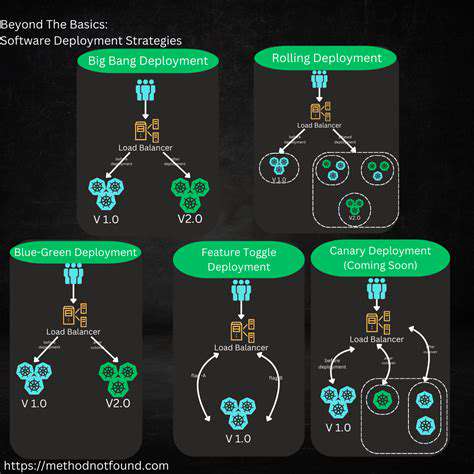Authentic Chinese Dumplings: Filling and Folding
Savory Sensations: Exploring Diverse Flavors
Beyond the ubiquitous pork and chive filling, a world of culinary possibilities awaits. From the vibrant tang of shrimp and ginger to the savory depth of beef and black bean, experimenting with different protein sources and aromatic vegetables can elevate your dumplings to a whole new level. Consider the delicate sweetness of lotus root, the earthy richness of mushrooms, or the subtle heat of Sichuan peppercorns. Each ingredient brings a unique flavor profile, creating a symphony of tastes that will tantalize your palate.
The key to a truly exceptional dumpling filling lies in balancing the flavors. A well-crafted filling will have a harmonious blend of salty, savory, and sometimes sweet notes. Don't be afraid to experiment with different spice combinations or incorporate unique herbs and vegetables to create your own signature flavor profiles. The possibilities are endless, and your creativity will be rewarded with delicious results.
Texture Triumphs: Mastering the Right Consistency
The texture of a dumpling filling is just as crucial as its flavor. A perfectly seasoned filling will fall apart if it's not properly prepared. A delicate and tender filling is essential for a delightful eating experience. Understanding how different ingredients react to cooking is key. For example, finely chopped vegetables will release their moisture during cooking, while ground meat will absorb some of the liquid. Knowing how to control these processes will allow you to achieve the ideal texture.
Achieving the right consistency involves more than just chopping and mixing. Using proper techniques like kneading or mixing with cornstarch can create a binding agent that prevents the filling from becoming overly wet or dry. By paying close attention to these details, you'll be able to create a filling that's both flavorful and satisfying, adhering perfectly to the dumpling wrapper without falling apart.
Ingredient Integration: A Harmonious Blend
The success of a dumpling filling hinges on the skillful integration of its components. It's not just about combining ingredients; it's about creating a harmonious blend that complements each other. Consider the subtle sweetness of finely diced carrots and the savory depth of minced pork. The interplay of these flavors creates a delicious balance that is both complex and satisfying. Understanding the nuances of each ingredient is vital to achieving this balance.
Properly combining ingredients requires careful attention to ratios and proportions. Too much of one ingredient can overwhelm the others, while insufficient amounts can leave the filling lacking in flavor. Experiment with different ratios to find the perfect balance, and don't be afraid to adjust your recipe based on your own preferences. This meticulous process is crucial for creating authentic and delicious dumplings.
Beyond the Basics: Advanced Techniques
Once you've mastered the fundamentals of dumpling fillings, you can explore more advanced techniques. Consider incorporating fresh herbs like cilantro or scallions to add a burst of freshness. Using different cuts of meat, such as thinly sliced pork belly or tender chicken breast, can drastically change the texture and flavor of your filling. Exploring these options will allow you to create fillings that are both flavorful and unique.
Utilizing different cooking methods for the filling components, such as stir-frying or sautéing, can also elevate your dumplings. This allows you to create a filling that is both flavorful and tender. Understanding these techniques will allow you to create dumpling fillings that are truly exceptional, worthy of praise and admiration.
Beyond the Basics: Exploring Variations and Regional Specialties

Beyond the Fundamentals of Varia
Varia, a seemingly simple concept, holds a wealth of potential applications across diverse fields. Understanding its nuances allows for a deeper comprehension of its impact and the possibilities it unlocks. It's crucial to move beyond superficial observations and delve into the intricacies of Varia to truly grasp its significance.
Delving into Varia's complexities reveals a fascinating interplay of factors, leading to profound insights. Exploring the various facets of Varia is essential for those seeking to leverage its power and effectively address the challenges it presents. This exploration promises to be rewarding.
The Impact of Varia on Different Sectors
Varia's influence extends across multiple industries, impacting everything from healthcare to finance. The application of Varia principles in healthcare, for example, can lead to significant improvements in patient outcomes. It is a powerful tool for enhancing efficiency and reducing costs in various sectors.
In finance, Varia can be used to develop innovative risk management strategies. The potential applications are truly limitless.
Varia and Technological Advancements
Technological advancements have significantly shaped the way Varia is utilized. New tools and technologies are constantly emerging, opening up exciting new avenues for exploration and application. The interplay between Varia and technology is a dynamic one.
The Role of Varia in Problem-Solving
Varia plays a critical role in approaching complex problems with innovative solutions. Its adaptability allows for tailored strategies, making it a valuable asset in diverse problem-solving scenarios. This adaptability is crucial to tackling the multifaceted challenges of our time.
Varia and the Future
The future of Varia is bright, with promising advancements and applications on the horizon. The ongoing evolution of Varia suggests a future where its impact will be even more profound. Its versatility and adaptability make it a truly valuable tool for future development and innovation.
Case Studies and Real-World Applications
Analyzing real-world case studies provides valuable insight into the practical application of Varia. Examining how Varia has been successfully implemented offers a framework for future projects and initiatives. These case studies highlight the tangible benefits of using Varia in various contexts.
Understanding the diverse range of successful implementations of Varia offers a blueprint for future success. Learning from past experiences allows us to anticipate and address potential challenges more effectively. It provides a compelling demonstration of the efficacy and power of Varia.
Cooking Methods: Achieving the Perfect Dumpling

Grilling
Grilling, a popular cooking method, involves cooking food over direct heat from a source like charcoal or gas. This method imparts a distinctive smoky flavor and creates a nice sear on the outside of the food, often resulting in a juicy interior. Grilling is ideal for meats, vegetables, and even fish. It's a great way to enjoy the taste of fresh ingredients, and the ability to control the heat allows for versatility in cooking different types of food.
The key to successful grilling is maintaining consistent heat and proper timing. Overcooking can result in dry, tough food, while undercooking can lead to foodborne illnesses. Careful monitoring and adjusting the heat source are crucial for achieving optimal results.
Baking
Baking, a common method involving dry heat in an enclosed oven, is excellent for achieving a tender, flaky, or crisp texture in various foods. From cakes and breads to cookies and pies, baking offers a wide range of possibilities for creating delicious treats and savory dishes. This method allows for precise control over temperature and time, enabling bakers to achieve desired results.
The use of different ingredients and techniques in baking allows for a vast array of culinary creations. From intricate pastries to simple cakes, baking provides a platform for creativity and culinary exploration.
Boiling
Boiling, a straightforward cooking method, involves immersing food in rapidly heated water. This method is commonly used for cooking pasta, vegetables, and eggs. It's a quick and efficient way to cook foods evenly, extracting flavors and nutrients.
Boiling is a fundamental cooking method that is essential for many dishes. Its simplicity and effectiveness make it a popular choice for preparing a variety of foods, from simple soups to elaborate stews.
Steaming
Steaming, a gentle cooking method, involves cooking food over hot steam. This method helps retain nutrients and moisture in the food, resulting in tender and flavorful dishes. Steaming is particularly beneficial for vegetables, fish, and dumplings, preserving their natural flavors and textures.
Steaming is a healthy way to cook foods, as it minimizes the amount of added oil or fat. It's an excellent choice for those seeking to maintain a healthy diet while enjoying delicious meals. This cooking method is also ideal for those with dietary restrictions, as it allows for a low-fat cooking experience.
Sautéing
Sautéing is a quick cooking method that involves cooking food in a small amount of oil or fat over medium-high heat. This method creates a flavorful sear on the food while maintaining a tender interior. Sautéing is commonly used for vegetables, meats, and seafood. It's versatile and allows for a wide range of culinary creations.
Sautéing is particularly useful for achieving a quick and flavorful meal. The method allows for a rapid cooking time, making it perfect for busy schedules. It also allows for easy incorporation of various spices and herbs, further enhancing the taste of the dishes.
Frying
Frying, a method that involves cooking food in hot oil or fat, is commonly used for achieving a crispy texture and golden brown exterior. From French fries to chicken wings, frying offers a unique way to prepare diverse foods. Different types of frying, such as pan-frying and deep-frying, result in various degrees of crispiness and flavor intensity.
Frying is a technique that can result in delicious, flavorful meals. However, it's important to use appropriate amounts of oil and maintain the correct temperature to avoid burning or undercooking the food. It’s important to be careful when working with hot oil.
- Cooking with Electric Grill: Indoor Grilling
- Homemade Pizza Dough: The Ultimate Guide for Beginners
- Vegetarian Lunch Ideas: Wholesome and Satisfying
- Vegetarian Breakfast Ideas: Hearty and Healthy
- Quick Dinner Ideas for Families: Everyone Will Love
- Food Safety in Your Kitchen: Essential Practices
- Storing Yeast: Maintain Potency
- Kitchen Appliances for Healthy Cooking: Smart Choices
- Mediterranean Diet Lunch Ideas: Healthy and Flavorful
- Cooking with Air Fryer Accessories: Expand Your Options
- Simple Shrimp & Grits: Southern Comfort
- How to Store Bananas for Smoothies: Freezing Tips